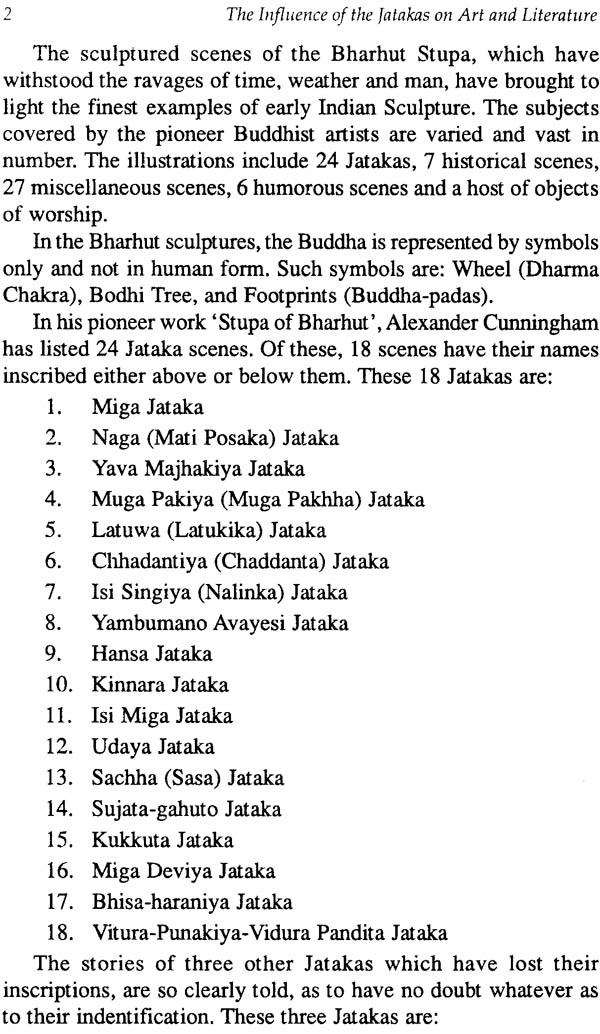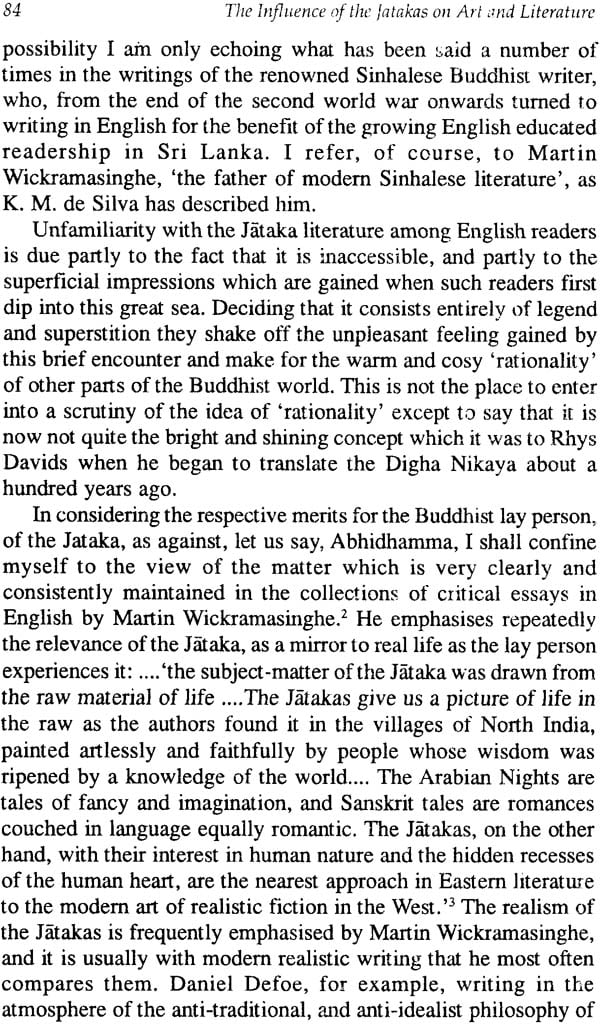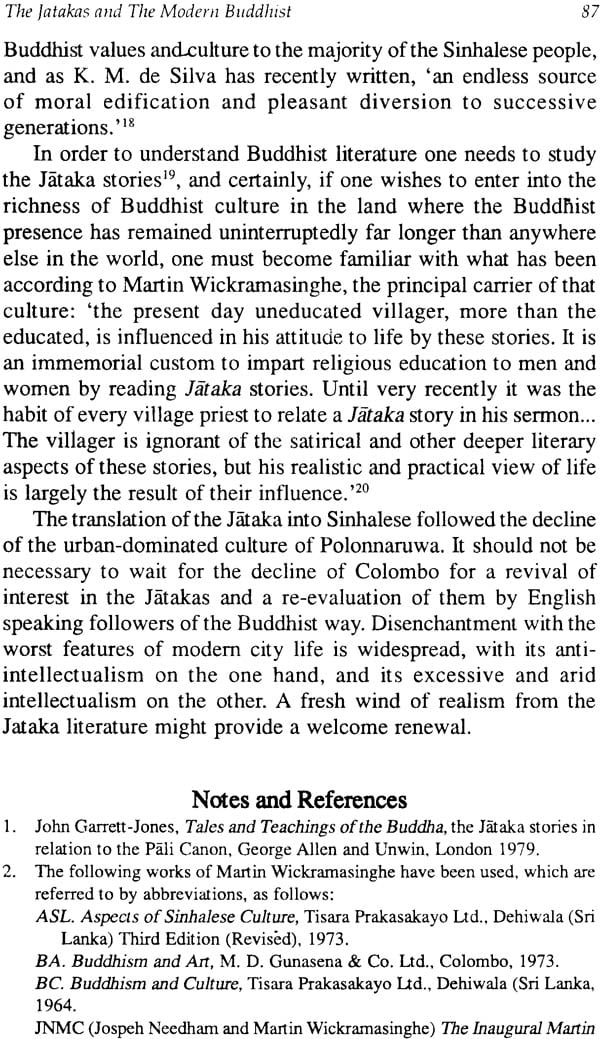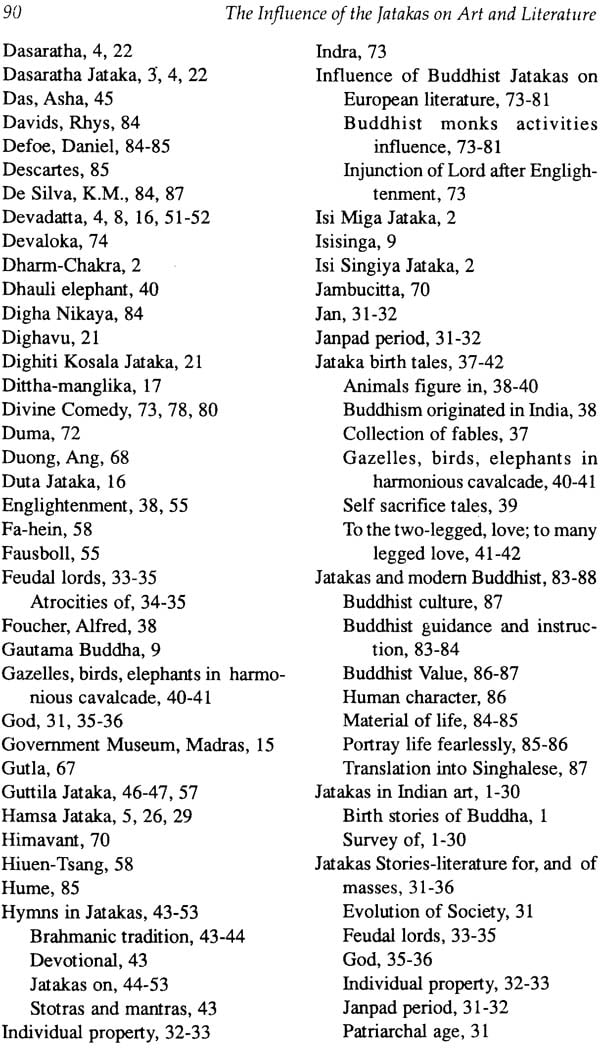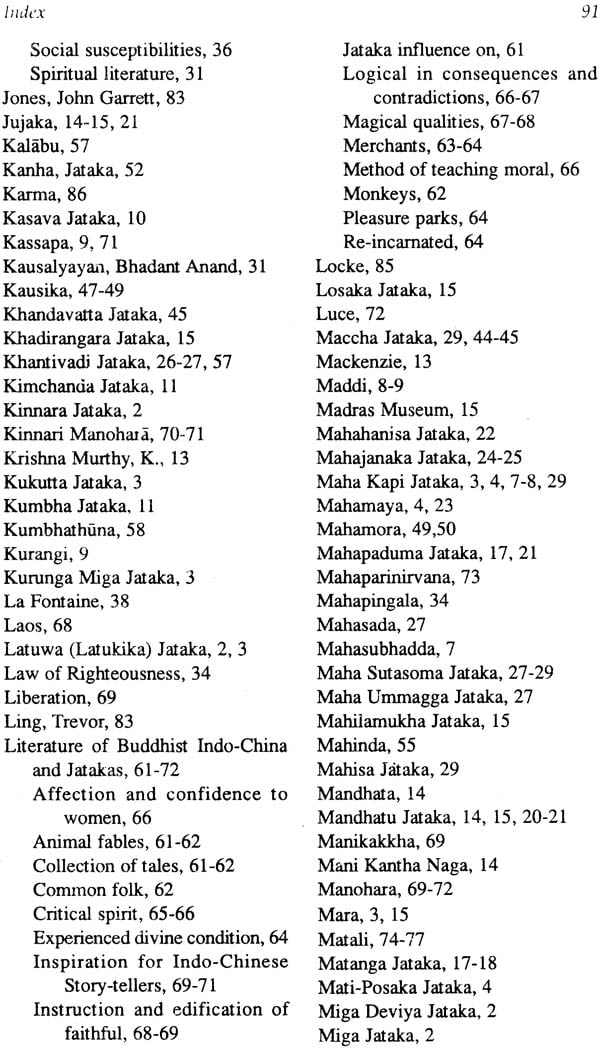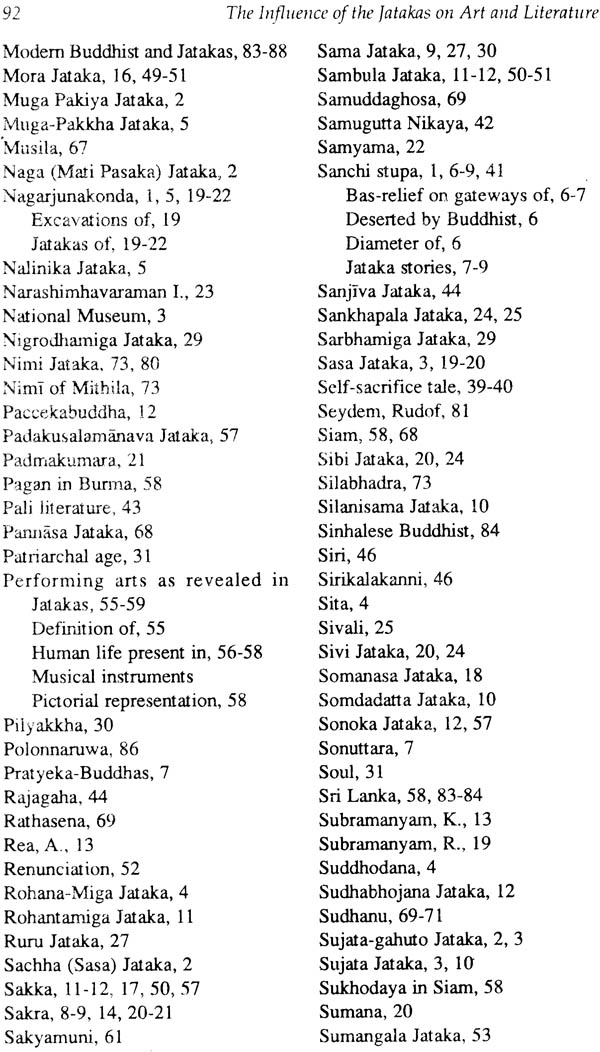
The Influence of The Jatakas on Art and Literature
Book Specification
| Item Code: | IDI564 |
| Author: | D. C. Ahir |
| Publisher: | B.R. Publishing Corporation |
| Language: | English |
| Edition: | 2006 |
| ISBN: | 8176460990 |
| Pages: | 93 |
| Cover: | Hardcover |
| Other Details | 8.6"X 5.6 |
| Weight | 220 gm |
Book Description
From the Jacket
The Jataka, one of the books of Khuddaka Nikaya of the Pali Canon (Tripitaka), has in all 547 stories o the past lives of Gautama the Buddha. The Jataka stories, being full of wit and humour, worldly wisdom, moral lessons, and pious legends of semi-historical nature, were very helpful in popularizing the Dhamma amongst the masses. As such, they were not only handed down orally from generation to generation but were also carved or painted on the walls of the Buddhist monuments. As in India, so also in other Buddhist countries, the Jataka stories decorate the temples.
This book presents for the first time a comprehensive survey of the influence of the Jatakas on art and literature in India, I South-East Asia, and in Europe. The study begins with the description of all the Jatakas found in sculpture or paintings in India. In the next chapter, Bhadant Anand Kausalyayan, who translated all the Jatakas from Pali to Hindi, shows how the Jataka stories are a literature for, and of the masses. The other aspects covered in this study are: Hymns in the Jatakas, Performing Arts, the Jataka Influence on the Literature of Indo-China, the Influence of the Jatakas on European Literature, and The Jatakas and the Modern Buddhist.
D. C. Ahir (born in Punjab, 1928) is a renowned Buddhist scholar who has made a very significant contribution to Indian History by unraveling the glorious past of Buddhism. He has more than twenty other published works on Buddhism to his credit. He has also published a number of articles in various Buddhist journals, and presented papers in National and International Buddhist Conferences/Seminars.
He retired as Director to the Government of India, Ministry of Surface Transport, in February, 1986 and since then is fully engaged in enriching literature. His recent works include-Buddhist Shrines in India (1986), Maharashtra, The Land of Buddhism (1988), Heritage of Buddhism (1989), Buddhism in North India (1989), the Pioneers of Buddhist Revival in India (1989), the Legacy of Dr. Ambedkar (1990), Buddhism in Modem India (1991), Buddhism in South India (1992), Himalayan Buddhism (1993), Gautama Buddha (1994), Ashoka the Great (1995), A Panorama of Indian Buddhism (1995), Dr. B. R. Ambedkar, Buddhist Revolution and counter-Revolution in Ancient India (1996).
Preface
The Jataka, 10th book in a collection of 15 independent books of Khuddaka Nikaya, the fifth Nikaya of Sutta Pitaka of the Pali canon, has in all 547 Stories of Buddha's Past lives as Bodhisatta. The Jataka stories show how the Bodhisatta Gautama brought into perfection the ten Paramitas or Exalted Virtues, namely, Dana - Giving, Sila - Morla Purification, Nekkhamma - Renunciation, Panna - Wisdom, Viriya - Effort, Khanti - Enduring Patience, Sacca - Truthfulness, Adhitthana - Resolve, Metta - Universal Love, Upekkha - Equanimity, through life after life by taking birth as human being, and even in the sub-human realms, animals etc. Each Jataka tale opens with a preface called 'story of the present', which relates the particular circumstances in the Buddha's life which led him to tell the birth-story and thus reveal some event in His previous lives as a Bodhisatta. At the end, the Buddha invariably identifies the different actors in the story in their present birth.
As stories, the Jatakas are full of wit and humour, worldly wisdom, moral lessons, and pious legends of semi-historical nature. As such, when narrated to vast audience these stories had a telling effect and were very helpful in propagating the Dhamma amongst the masses. No wonder, the Jatakas were not only handed down orally from generation to generation but were also carved on the stone-walls of the Buddhist monuments. According to Maurice Winternitz, "The Jatakas are among the oldest motifs which were pictorially represented in India and even to-day they yield models for sculptors and painters in all Buddhist countries."
In India, we find Jataka scenes in sculpture at Bharhut (3rd century BC), Sanchi (2nd century AD), Nagarjunakonda (3rd century AD), and in paintings at Ajanta (6th century AD). The scenes unfold like an endless fresco, with the same themes repeated again and again - the sis-tusked elephant at Bharhut, Sanchi and elsewhere. All the heroes of Buddhist legend are there, singly or in groups, portrayed against backgrounds which, though conventionalized and reduced in scale, are sufficient to indicate the setting, whether forest, town or royal park. Like the human beings, the beasts play an active part in these scenes.
As in India so also in other Buddhist countries, the Jatakas found spontaneous popularity with the monks and the laity alike. Hence, hundreds of Jataka portrayals decorate temples of Borobudur in Java (9th century AD), of Polonnaruwa in Sri Lanka (12th century AD), of Pagan in Burma - Myanmar (13th century AD), and of Sukhodaya in Thailand (14th century AD).
In this study, we present an assessment of the influence of the Jatakas on art and literature in India, in South -East Asia, and in Europe. The study begins with a comprehensive survey by me of all the Jatakas found in art in India - at Bharhut (24), Sanchi (5), Buddha Gaya (16), Amaravati (20), Nagarjunakonda (12), and Ajanta (25). In the second essay, Bhadant Anand Kausalyayan, who translated all the Jatakas from Pali to Hindi, lists some typical stories dealing with the Individual Property, The Feudal Lords, Atrocities of Feudal Lords, and Social Susceptibilities. The remaining six essays are: Jataka Birth Tales -The Jungle Touched by a Magical wand by Jeannine Auboyer, Hymns in the Jatakas by Dr. Asha Das, Performing Arts as Revealed in the Jatakas by Dr. D. K. Barua, The Jatakas and the Literature of Buddhist Indo-China by Ginette Terral Martini (Translated by Prof. Dilip Kumar Banerjee), The Influence of Buddhist Jatakas on European Literature by Bhikkhu Silabhadra, and finally The Jatakas and the Modern Buddhist by Trevor Ling.
The Primary source of the essays included in this volume is the Maha Bodhi Journal published by the Maha Bodhi Society of India, Calcutta. I am greatly indebted to the publishers and the authors.
| Foreword | vii | |
| Preface | iii | |
| 1 | The Jatakas in Indian Art | 1 |
| -D. C. Ahir | ||
| 2 | Jataka Stories: Literature For, And of, The Masses | 31 |
| -Bhadant Anand Kausalyayan | ||
| 3 | Jataka Birth Tales-The Jungle Touched by a Magical Wand | 37 |
| -Jeannine Auboyer | ||
| 4 | Hymns in the Jatakas | 43 |
| -Asha Das | ||
| 5 | Performing Arts as Revealed in the Jatakas | 55 |
| -D. K. Barua | ||
| 6 | The Jatakas and The Literature of Buddhist Indo-China | 61 |
| -Ginette Terral Martini (Translated from the French by Dilip Kumar Banerjee ) | ||
| 7 | Influence of Buddhist Jatakas on European | 73 |
| -Bhikkhu Silabhadra | ||
| 8 | The Jatakas and The Modern Buddhist | 83 |
| -Trevor Ling | ||
| Index | 89 |

